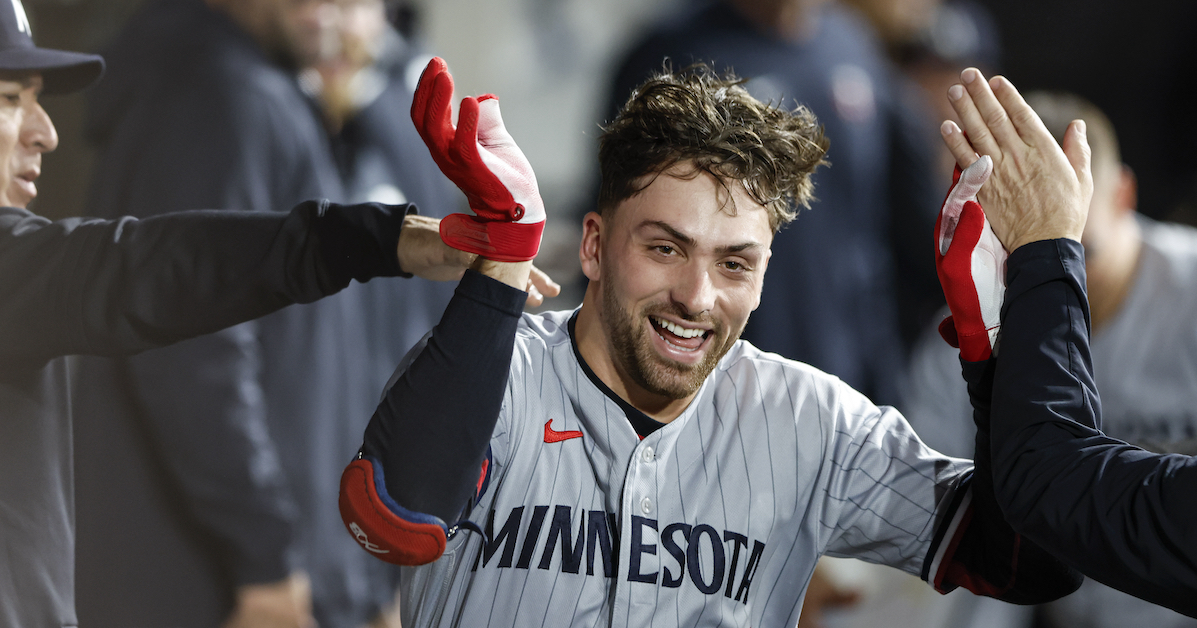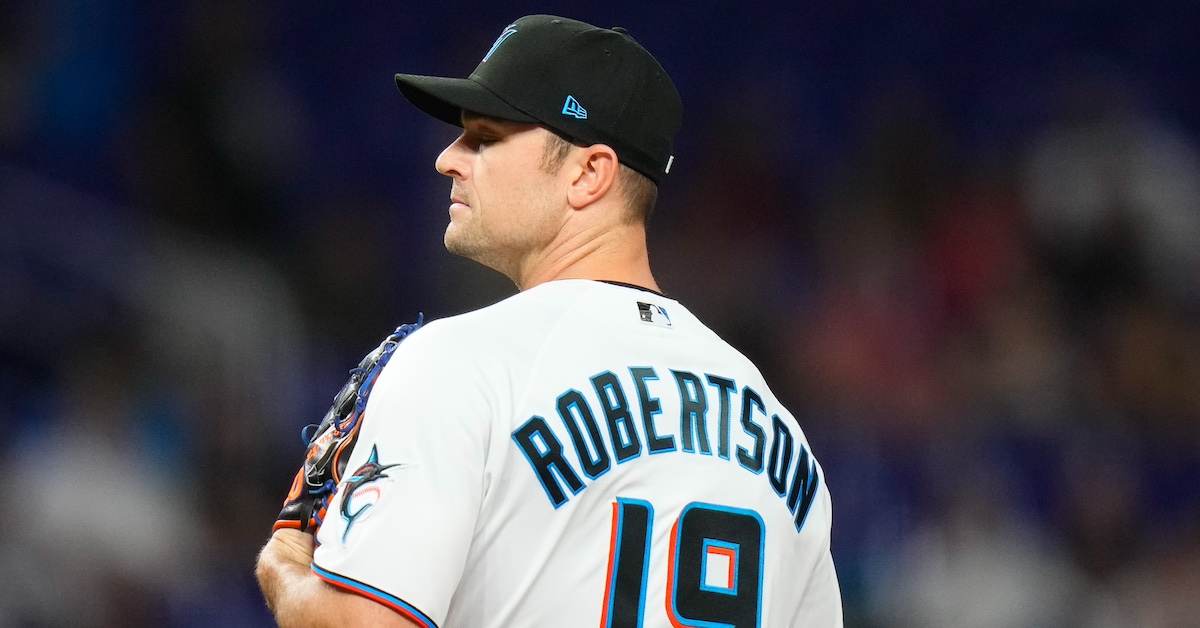The Tigers Wrangle a Colt

The Detroit Tigers locked up one of their top young prospects to a long-term extension over the weekend, signing infielder Colt Keith to a six-year contract worth $28.6 million guaranteed, including a buyout after year six. With three team options totaling an additional $38 million, Keith might not hit free agency until after the 2032 season. Those options can be enriched further, by up to $18 million, depending on Keith’s success at earning MVP votes, Silver Slugger awards, and All-Star appearances. The deal has a maximum value of $82 million over nine years.
One of Detroit’s recent struggles has been its inability to find and develop offensive talent. This wasn’t the case during the team’s run of success in the early 2010s, with future Hall of Famer Miguel Cabrera as its anchor. But as Cabrera and Victor Martinez aged, and other key contributors, such as Prince Fielder, J.D. Martinez and Austin Jackson, left for other teams, the Tigers’ offensive output dropped to the bottom of the league. Aside from Nick Castellanos, who was traded in 2019, none of the young hitters coming up through the system have panned out.
That said, the Tigers have seen some signs of hope over the last few years. When healthy, Riley Greene has been very good, and while Spencer Torkelson had a rough start to his big league career, he improved significantly in the second half of 2023. Detroit still needs more, though, and that may come in the form of Keith, a fifth-round pick from the COVID-abbreviated 2020 draft. Keith showed promise in 2022, hitting .301/.370/.544 for West Michigan of the High-A Midwest League, but he injured his shoulder badly on a pickoff attempt in June, costing him the rest of the season. He recovered enough to play in the Arizona Fall League, where he hit .344/.463/.541 in 80 plate appearances over 19 games.
Despite the short season, he ranked atop Detroit’s prospect list found in our humble home. Splitting 2023 between Double- and Triple-A, Keith stayed healthy and hit a combined .306/.380/.552 with 27 homers and 38 doubles. ZiPS translates that performance into a .268/.328/.454, 20 homer line, well below the level of phenom, but more than respectable for a second base/third base prospect in his first go at the high minors.
With a contract that can stretch for nine years, let’s crank out the long-term ZiPS projection for Keith.
| Year | BA | OBP | SLG | AB | R | H | 2B | 3B | HR | RBI | BB | SO | SB | OPS+ | DR | WAR |
|---|---|---|---|---|---|---|---|---|---|---|---|---|---|---|---|---|
| 2024 | .252 | .314 | .434 | 507 | 72 | 128 | 29 | 3 | 19 | 75 | 44 | 128 | 2 | 107 | -3 | 1.6 |
| 2025 | .254 | .317 | .442 | 527 | 77 | 134 | 30 | 3 | 21 | 80 | 47 | 127 | 2 | 110 | -3 | 2.0 |
| 2026 | .257 | .322 | .451 | 545 | 82 | 140 | 31 | 3 | 23 | 85 | 51 | 125 | 2 | 114 | -3 | 2.4 |
| 2027 | .258 | .324 | .456 | 562 | 87 | 145 | 32 | 2 | 25 | 90 | 54 | 124 | 2 | 116 | -3 | 2.6 |
| 2028 | .259 | .327 | .458 | 576 | 90 | 149 | 33 | 2 | 26 | 93 | 57 | 124 | 2 | 118 | -2 | 2.8 |
| 2029 | .257 | .327 | .459 | 579 | 92 | 149 | 32 | 2 | 27 | 94 | 59 | 121 | 2 | 118 | -2 | 2.9 |
| 2030 | .258 | .328 | .461 | 577 | 92 | 149 | 32 | 2 | 27 | 94 | 59 | 121 | 2 | 119 | -2 | 3.0 |
| 2031 | .259 | .329 | .460 | 567 | 89 | 147 | 32 | 2 | 26 | 93 | 58 | 120 | 2 | 119 | -3 | 2.9 |
| 2032 | .261 | .331 | .462 | 567 | 89 | 148 | 32 | 2 | 26 | 93 | 58 | 120 | 1 | 120 | -3 | 2.8 |
While those are not star-level projections, they are the ones of a player you’d like to keep around through his prime. There are lots of familiar names among Keith’s ZiPS comps, such as Eric Chavez, Hank Blalock, Jedd Gyorko, Castellanos himself, Rafael Devers, Ryan Zimmerman, Travis Fryman, and Joe Crede. No, none of them were Hall of Famers – though it’s plausible that Devers could hit enough homers to prove the exception – but each were solid big leaguers.
One of the largest remaining questions around Keith is what position he’ll play in the majors. He’s played both second and third base, and appears to be below average at both. The probabilistic coordinate method that ZiPS uses graded Keith at about eight runs below average at second base, per 1300 innings, in 2023 and six runs below average at third. My colleague Eric Longenhagen feels that Keith is more likely to stick at second, rather than third.
During his stay in Toledo, Keith began to see more time at second base rather than his native third. He’s a bad defender at both spots but has a much greater chance at becoming passable (read: hidden) at second, where some of Keith’s issues with throwing are masked.
[…]
Keith has bulked up considerably since signing, and the effects of his increased size are evident on defense. Once a fair bet to stay on the middle infield, he is now fighting just to stay at third. He is stiff and bulky, his actions are well below average, and while he shows you a big arm when he gets to wind up and really let it eat, he struggles to throw from odd platforms. It’s feasible a team could live with him playing third base situationally, but it’s not ideal, and Colt is a 30-grade defender right now.
In a perfect world, Keith would stick at one of the two positions, with Jace Jung manning the other. One of the nice things about a rebuild is that teams get the chance to experiment, and the Tigers take advantage of that with Keith. Playing him in left field would be a great deal less exciting, but not a disastrous outcome, with mean projected OPS+ numbers in the high 110s during his prime. Left field Keith profiles similarly to Lourdes Gurriel Jr., who as one of the best outfielders available in free agency this offseason managed to snag a three-year deal with the Diamondbacks.
There are risks that come with signing a player with so little professional experience, but those are reflected in the price. Yes, $28.6 million is a lot of cash, but not so much in the context of baseball, and the ZiPS projection for Keith suggests a $38 million offer, taking into consideration the reduced salaries of the cost-controlled years. Similar extensions to Jon Singleton and Scott Kingery didn’t work out particularly well for the teams that made them, namely the Astros and Phillies, but those deals weren’t detrimental, either. The upside for Detroit here is considerable.
Are the Tigers playoff contenders in 2024? Probably not. But they’re not so far away that it would be a black swan event if they made some noise in the AL Central race or threatened to grab the last wild card spot. If they succeed, it will likely be in large part due to players like Keith taking a step forward.









